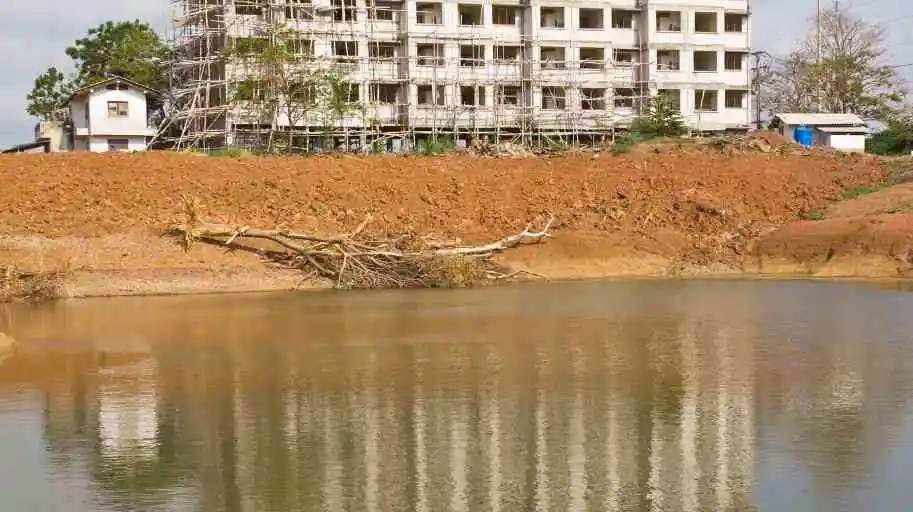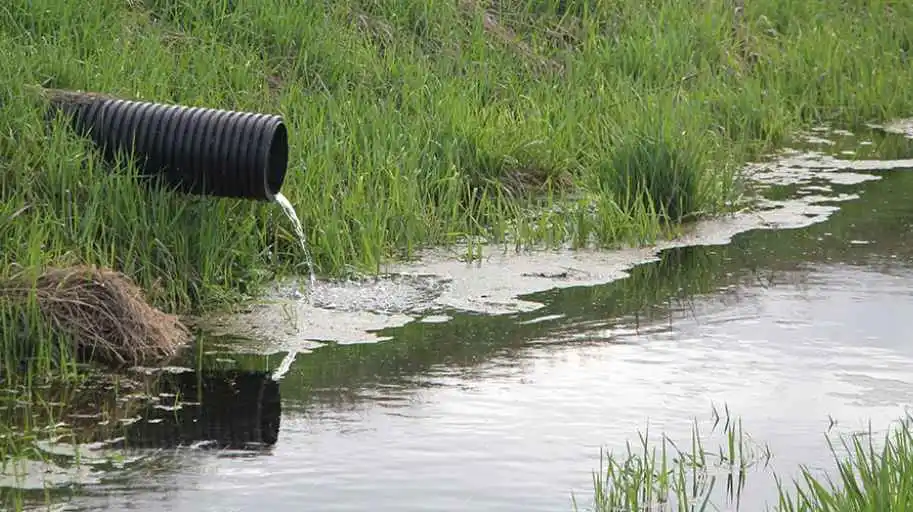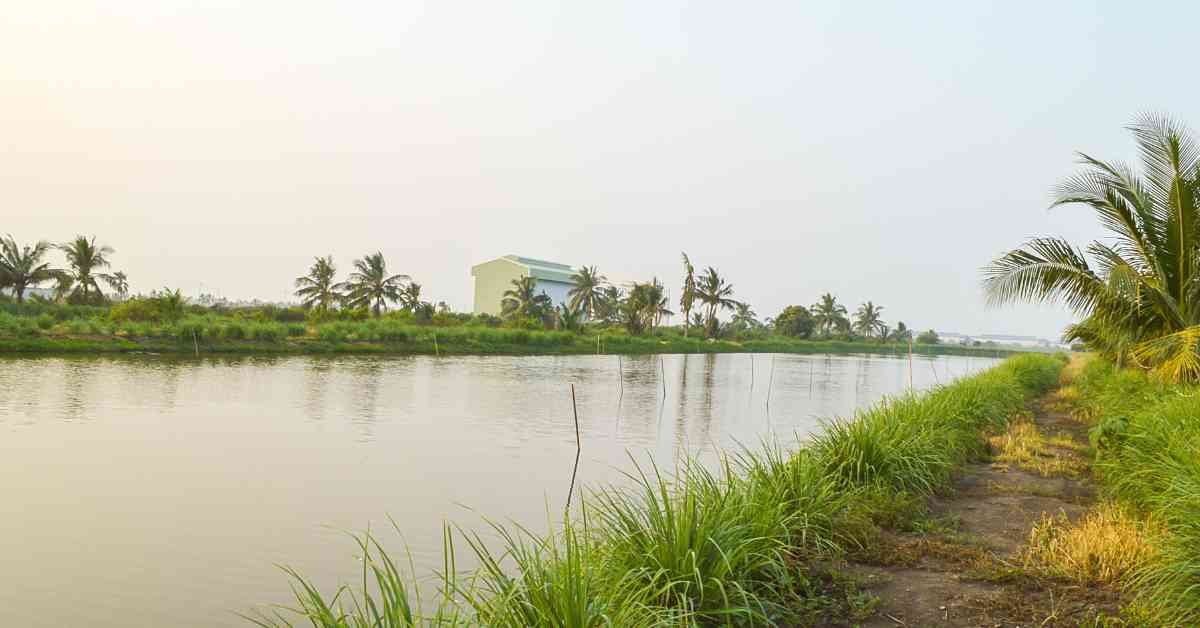Do you have a passion for raising fish? If so, you’ll need to build and manage a pond for your fish. In this blog post, we’ll give you tips on pond building and management for fish farming. We’ll cover topics like choosing the right location, size, and depth of the pond and how to keep the water quality high. So continue reading if you’re ready to start a fish farm!
Pond building and management for fish farming
If you’re thinking about starting a fish farm, one of the first things you’ll need to do is build a pond. This complete guide will walk you through building a pond for fish farming from start to finish.
First, you’ll need to choose a location for your pond. It’s essential to select a spot that has good drainage and is away from trees or shrubs, as roots can damage the liner. Once you’ve chosen a location, you’ll need to excavate the area to the desired depth. A depth of 3-5 feet is ideal for most fish farms.
Next, you’ll need to line the pond with a waterproof liner. This will help to prevent water loss and keep the pond from leaking. There are several different types of liner available, so be sure to choose one that is durable and will withstand the elements.
Once the liner is in place, you’ll need to fill the pond with water. If you’re using tap water, let it sit for 24 hours before adding any fish, as chlorine can harm them. Once the pond is complete, you can add your fish!
Building a pond for fish farming doesn’t have to be difficult – follow these simple steps, and you’ll have a pond ready for fish in no time.

Steps for pond building and management for fish farming
- Pond drying and liming
- Soil and water management
- Control of aquatic weeds and predators
- Fertilization and manuring
- Water supply
- Species selection and stocking density
- Feed management
- Periodic checking
- Harvesting
- Production
Pond drying
Drying is essential when pond water becomes unproductive or when there is a discoloration to the water. It is also necessary to repair the embankment and remove mud from the old pond bottom. You can dry a pond with sunlight or a pump after harvesting the whole crop.
Advantages
- A dry period can be used for routine maintenance works on the pond banks and drainage channels which are very difficult when the pond is underwater.
- The killing of harmful insects, fish parasites, pathogenic bacteria, and fungus
- Restoration of the fertility of the pond
- Drying is a well-approved measure to stimulate the growth of algae on which the milk fish is fed.
- Drying the pond paves the way for free access of oxygen into the organic debris of the bottom mud and makes it completely oxidized, which leads to the release of nutrients (mineralization)
- Repairing the pond bank
- Increasing the fertility of bottom soil Disadvantages
- Loss of nutrients
- Loss of organisms directly or indirectly beneficial to fish
- Loss of ecological relationship between flora and fauna of the pond
- Loss of all aquatic life in a pond
- In some areas, it isn’t easy to supply water after drying.
Pond liming
Liming is one of the most important parts of pond construction and management. Lime is a neutralizing agent that buffers pond waters against sudden pH changes by increasing the pond water’s alkalinity. It helps to increase the productivity of the pond. It has some beneficial effects on fish as well as the biological condition of the pond.
Liming is necessary when:
- pH is low
- Heavy organic matter is present.
- The pond’s bottom is full of mud.
- Fish is threatened with infectious diseases.
Methods of liming
- Liming can be carried out in three different ways;
- Liming in the bottom of a dried pond (dry liming)
- Wet liming in a water-filled pond. Before liming, lime should be kept in water to melt for 12-20 hrs.
Advantages
- It increases and settles the exact pH of the pond water.
- It improves the quality of soil and water.
- It eradicates the turbidity of water.
- It is also used as a biocidal agent.
Disadvantages
- It destroys the plant and plankton temporarily.
Soil and Water Management
Soil and water management are aquaculture’s two most essential parts, as they directly influence fish production.

- Generally, loam and clay-loam types of soil are most favorable for freshwater aquaculture.
- Rearing ponds should be located where a permanent source of suitable water is available.
- The water supply should be adequate to fill the pond.
- Excessive flow through a pond flushes out nutrients and prevents the effective use of fertilization.
- In most cases, a pipe is used for water supply. A fine-meshed net is used at the end of the pipe.
- The amount of supplied water depends on the depth of the pond (e.g., nursery pond: 2.0 to 2.5 ft., stocking pond: 5.o-6.o ft.)
Water Supply
Water is necessary to fill up ponds and replace water lost through evaporation and seepage.
- Three usual sources of water to supply in ponds, i.e., springs, perennial streams and rivers, and surface runoff from rainfall.
- Deep tubewell is used in most aquafarms as the artificial source of regular water supply.
- After a week of water supply, the water turns greenish and indicates plankton availability. Visibility of the palm to a depth between 20 to 30 cm (elbow depth) means great natural productivity.
Control of aquatic weeds and predators
Abundant growth of vegetation (weed)
- Arrest the pond productivity by absorbing nutrients,
- help in harboring the predatory and weed fishes/ insects,
- Hinder the free movement of fish and disturb netting operations.
Generally, manual methods are the most suitable in developing countries to control aquatic weeds. In more extensive ponds, you can use mechanical, chemical, and biological methods for weed eradication.
Carnivorous fish can eat fingerlings stocked into a pond. Other wild fish/weed fish compete with stocked fingerlings for food and oxygen, causing slow growth.
It is important to remove any wild fish from fingerlings before pond stocking. There are several methods to control predatory fish.
Fumigant tablet (Phostoxin/Selphos etc.)
- The fumigant tablet protects food grains from insects/pests/attacks.
- It kills all the fish in the pond.
How to apply
Uniformly throw the desired number of tablets throughout the pond. Net the pond to catch the fish as soon as they start surfacing.
Caution: Use a mask while applying the tablet in the pond. The result is relatively better in shallow ponds.
Toxicity: Toxicity lasts for 7-10 days.
Dose: 1 tab (3g each)/decimal/3o cm (1 foot) of water
Fertilization and Manuring
Fertilization of ponds is the enrichment of the nutrient composition of the aquatic ecosystem for optimum production of primary and, subsequently, secondary producers.
- Fertilization is a process of increasing the natural productivity of water.
- After liming, the ponds are treated with organic manures such as cow dung, poultry dropping, inorganic fertilizers, or following others.
- Summer is the best period for pond fertilization.
Purpose of fertilization
- To increase the natural productivity of the pond.
- The exact goal is to increase the microscopic plankton and benthos production on which fish usually live.
- Helps to remove dietary disease
- Simplest, most accessible, and economically beneficial process of increasing natural food for aquaculture
- To improve the hygienic condition of the pond Best time for using fertilizer starts from April and continues to October.
- During this period, the temperature is favorable for fish-rearing, the water temperature rises, the fish’s metabolic rate is increased, feeding rate and growth rate increase to the optimum.
Generally, you should apply the following dosage per decimal during pond construction:
| Fertilizer and manure | Dose/decimal |
| Cow dung, or | 5-7 kg |
| Poultry droppings, or | 3-5 kg |
| Compost | 8-10 kg |
| Urea | 100-150 gm |
| TSP (Triple superphosphate) | 50-75 gm |
| MoP (Muriate of potash) | 20-25 gm |
Precautions:
- 50% cow dung and 50% poultry droppings should be used
- Fertilization in shallow water is dangerous as it may result in plankton bloom.
- Due to overuse of manure, fin disease, skin disease, etc., may break out.
- The dry season is unsuitable for fertilization due to lower water retention capacity.
- To grow these fish food organisms, we must apply both organic manure and inorganic fertilizer in the rearing ponds.
Species Selection and Stocking Density
- For species selection, the following characteristics should get preference.
- Fast-growing species/ fish
- High market demand
- Have early maturity
- Able to tolerate high density
- Readily available fish seed
- Having greater resistance against common diseases
- Able to live on the natural productivity of the pond and the supplementary feed as well
- Species have different feeding habits but is not reported as predator.
- Determination of the stocking rate depends mainly on the productivity of the pond and the type of management measures.
- The normal stocking density of fry suggested for rearing ponds is 0.1-0.3 million/ha.
- The stocking should be done preferably during the morning by acclimatizing them to the new environment.
- There exists a close relationship between stocking-density fish and overall production.
- Stocking density should be higher in semi-intensive carp culture than in extensive culture. For example, in carp-polyculture, 3500-4000 fish seeds can be stocked at a time if supplemental feed and fertilization are practiced regularly.
Feed management
In addition to the available natural fish food organisms in the pond, you should apply some artificial feed from outside for better growth and increase production.
- This type is known as the supplemental feed.
- Generally, powder meals like — fish meal, fish and bone meal, rice bran, wheat bran, mustard oil cake, etc., can be applied as supplemental feed in moist or semi-moist conditions.
- When grass carp are stocked, duckweeds like Wolffia, Lemma, and Spirodela will be provided.
- A supplementary feed can be avoided for initial 2-3 days of stocking.
- The available natural food is enough for the stocked seed during this period.
If the number of fish is higher than the available natural food;
- Mal-nutrition may take place,
- The growth rate may be reduced,
- The infectious or no-infectious disease may break out and
- The ultimate fish production may need to be improved.
Artificial feed
- Artificial feed is more valuable.
- It increases production undoubtedly, as it contains a more significant amount of protein responsible for a higher growth rate. For example, using artificial feed with 30% protein, 10 million gift tilapia per acre can be cultured simultaneously. Moreover, artificial feed can increase the production of Thai Pangus and Carp.
Periodic checking
Checking in at regular intervals is important to make sure of the following:
- To check the growth status of fish.
- To know whether any disease may break out or not.
- To estimate the natural fish food.
- Netting over the pond to let exercise for better metabolism, better utilization of feed, and for dissolving more oxygen
- Bottom raking is necessary periodically to remove toxic gasses from bottom mud.
Application
Dipterex: Mix the amount of Dipterex you want to use with enough water and put it on the spawn 24 hours before you put it in the water.
Sumithion: About 12 hours before stocking and 12 hours after application of Dipterex, you should apply the desired amount of Sumithion to the pond after mixing it with sufficient water.
- These two chemicals are selective poisons for larger zooplankton and other aquatic insects, which are highly predatory in nature.
- By killing them, the rapid growth of smaller zooplankton (rotifer) can be ensured, which are the food for spawns.
a) Periodic Fertilization
It is necessary when natural productivity falls below a certain level. Water transparency higher than 30 cm indicates regular manuring and fertilization.
b) Eradication of aquatic insects/ larger zooplankton
Before stocking spawn in the pond, apply any of the following methods:
Using Dipterex and Sumithion to kill the undesired insects and predatory zooplankton.
- Dipterex: 13-15 g and Sumithion: 6-7 ml.
- Dose: Decimal/ 30 cm (1 foot) of water
Using kerosine or diesel to kill the backswimmers and other predatory aquatic insects
- Dose: 125 ml/ decimal
Application:
The desired amount of oil can be in the pond. It is not permissible to apply on days with high winds. Net the pond with a fine mesh net during windy conditions, then close the net and apply the oil. It kills the aquatic insects that come inside the closed net.
Caution:
- Oil application kills only the aquatic insects but not the Cladocerans and Copepods (larger and predatory zooplankton).
- Dipterex/Sumithion/oil application is not required during fry to fingerling rearing.
Harvesting
- You should harvest when the fish becomes marketable.
- The appropriate time for harvesting is early morning or late evening to raise the fish in the market in fresh or live conditions.
- Marketable size usually differs from species to species; e.g., in carp, 1-2 kg is the most remarkable commercial size. Again, in the case of tilapia, 300-400 g is the preferable size for customers.
Production
You can expect profitable fish production by adopting scientific rearing methods and better management practices.
Verdict
Rearing fish in ponds can be a good way to make money, but you need to know how to build and take care of a pond before you start. With the information in this guide, you should better understand what goes into creating and maintaining a healthy pond for your fish. If you have any questions or need help, leave a comment below. We are here to assist you. Thanks for reading!
